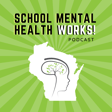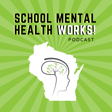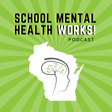
Episode 5: Solving for X - The School Mental Health Funding Equation
Communities and schools seeking mental health solutions for students are true math whizzes - “blending and braiding” funding from philanthropy, local levy, state & federal grants and insurance to deliver the right answer for success.
In the fifth episode, Coalition Board Chair Julie Hueller (Manager, Racine Collaborative for Children's Mental Health) welcomes guests Kristen Waters Guetschow PhD, Director of Mental Health, Madison Metropolitan School District and Scott Radke, Chief Clinical Officer, Catalpa Health for a dialogue on lessons learned and challenges ahead. Kristen and Scott share the unique, problem-solving approaches that have emerged in their communities to provide a full range of mental health supports to students. Their conversation sheds light on the complexity and fragility of current funding structures and the importance of continued efforts to find solutions and bring sustainable services into Wisconsin’s future.
Show Notes
Coalition for Expanding School-Based Mental Health in Wisconsin
Wisconsin Department of Public Instruction - Comprehensive School Mental Health
Wisconsin School Mental Health Framework
Wisconsin Office of Children’s Mental Health
Madison Metropolitan School District
CBITS - Cognitive Behavioral Intervention for Trauma in Schools
Connections for Mental Wellness - NE Wisconsin MH Collective Impact


